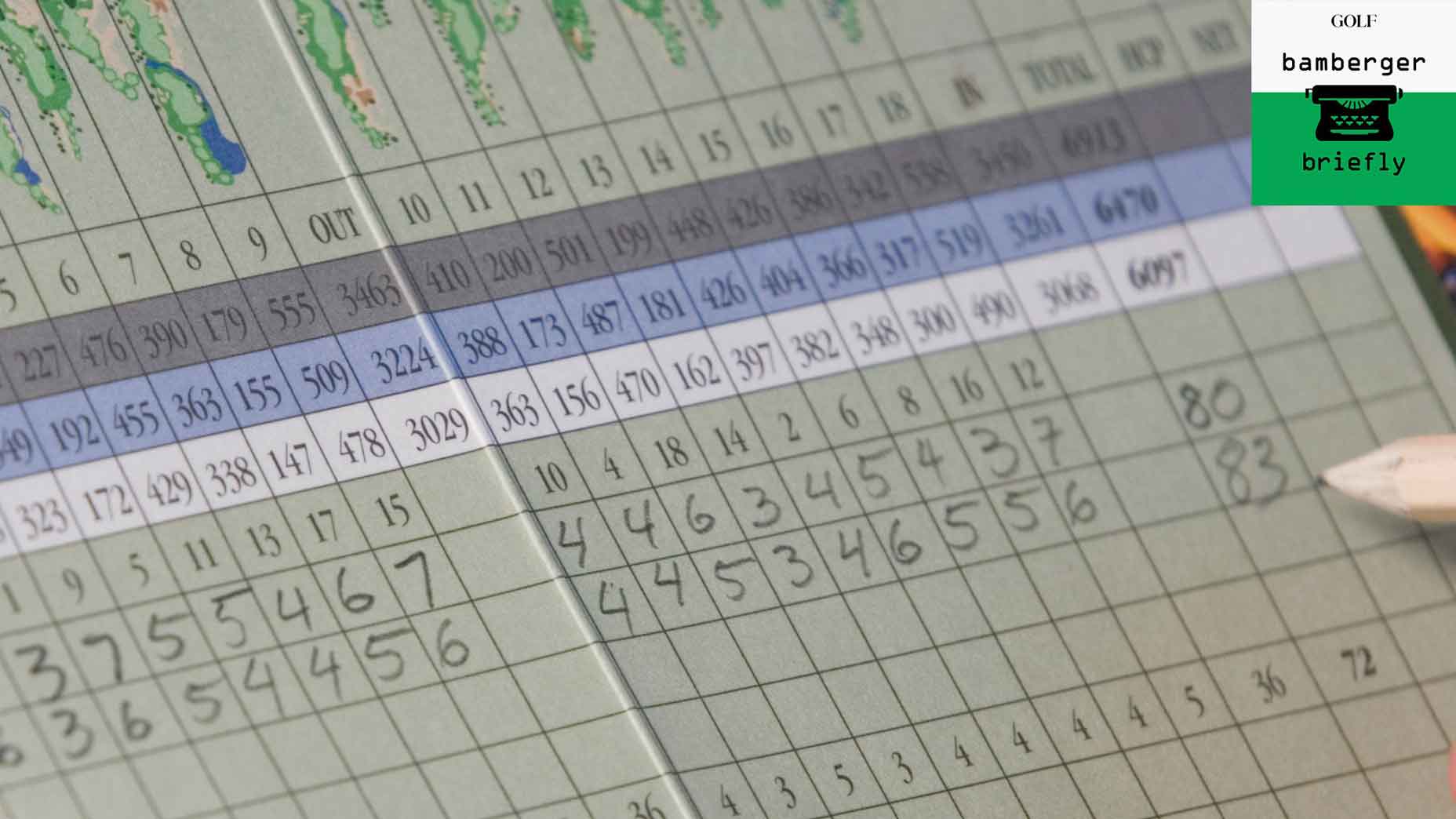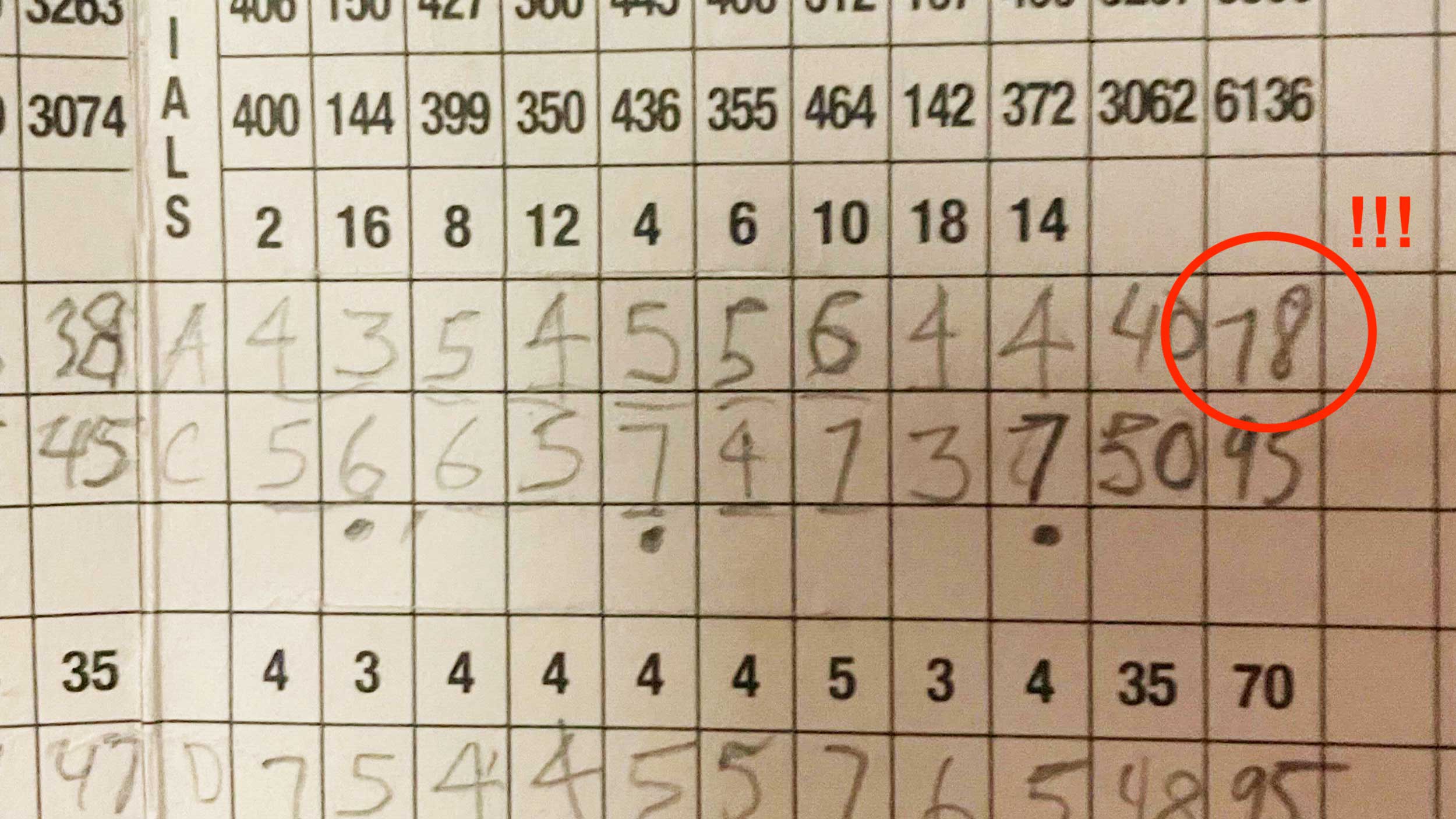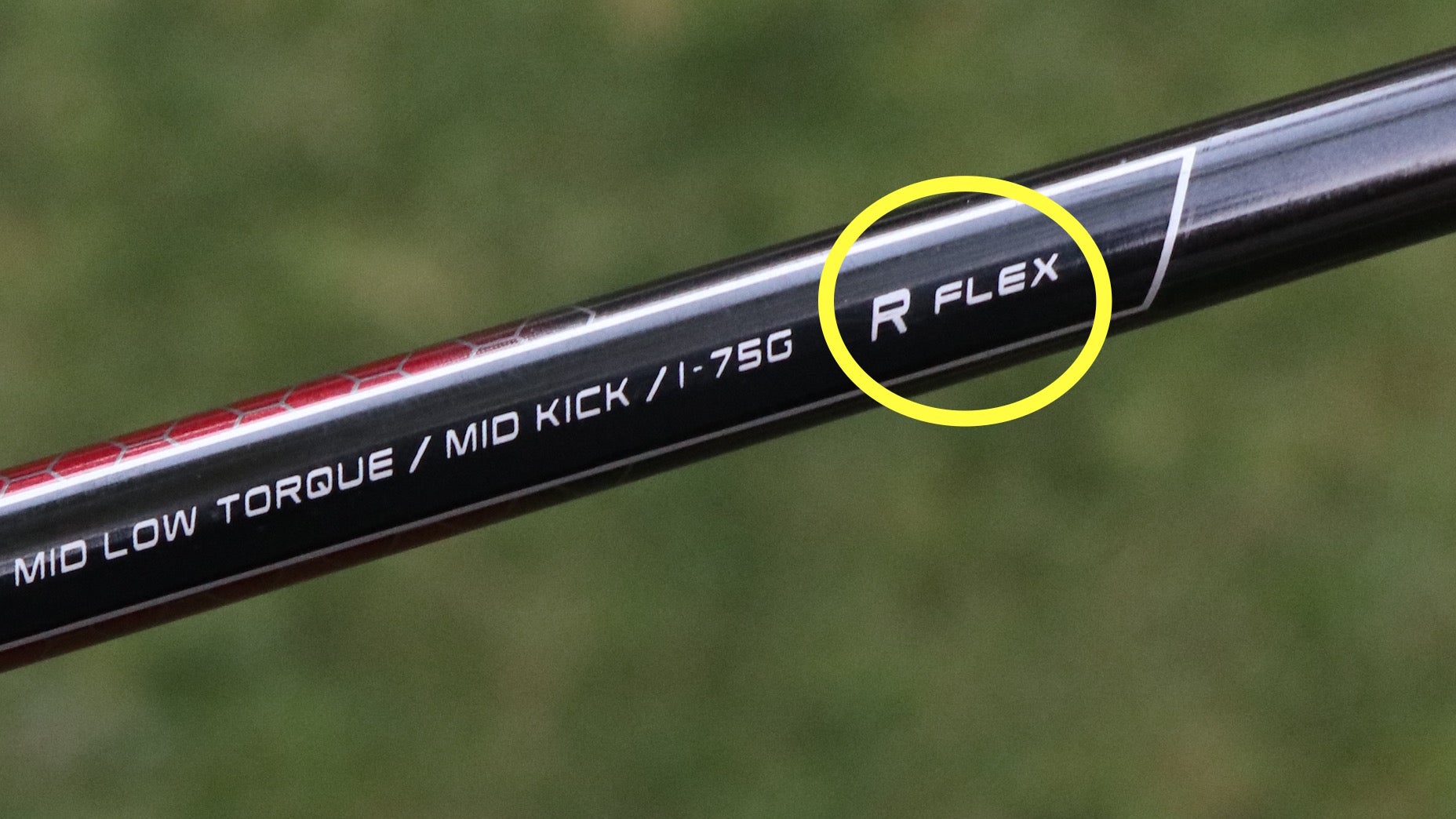
To shoot in the mid-80s or better requires some golf skill but not a great deal.
getty images
The question, posed to the Tour Confidential panelists on Sunday night was this: In this season ‘o thanks, what golfy thing are we grateful for?
Your correspondent needed three words: Playable left rough.
Since then, the phone has been ringing off the hook. Actually, that’s not true, in part because phones don’t have ringers anymore and they don’t get placed on hooks. But you get the idea.
What I meant is this: I can hit a cut driver. I can stand on the right side of the tee box, aim slightly left, hit it hard (for me) with almost no release and the ball will (should) wind up in the fairway or someplace in the left rough from which you can play a second shot.
A recent discussion about this broad subject — the good miss — with the novelist-golf bum Joseph O’Neill led to a thesis-in-progress with this modest working title: How to Shoot Under 14 Over.
You know — 85 or better on par-72 course.
And you are playing a par-72 course. Right?
For the sake of argument, a good course for you — for me, for any of us — has these rough distances on your bespoke scorecard.
Four holes that you can reach readily with your tee shot. Those are your par-3s.
Four holes, and only four holes, where your two solid shots will get you close to the green. Those are known as par-5s.
Ten holes — broadly, broadly speaking here — that you can reach with a driver and some sort of take-a-divot iron. Those are known as par-4s.
Courses are loaded with tee markers these days. Forget about your USGA-sanctioned round. On each of the 18 holes, play from a tee that can be played per the recipes above.
If your average drive is 210 yards and your average 7-iron is 120, your 10 par-4 holes should be in the 330 range. As variety is life’s spice, let’s say 300 to 350. Oh, and your 7-iron might be a hybrid of some sort.
Welcome to Dustin Johnson’s world. He’s hitting 8-irons into par-4s all day long. Why should he have all the fun?
By the way, he has a caddie. You don’t. Leave the headcovers in the car. They’re slowing you down. Golf should be played briskly.
On par-3s and par-5s, apply the same par-4 logic.
BTW II, as you are creating your own version of this great game:
*Make all your putts.
*Write down triple if you make a triple or worse. Pick up as needed.
*If you lose a ball, drop it where it should be and add a shot.
*If you hit it OB, drop it where it went out and add a shot.
*Play a match.
If all that adds up to 85 or better — those rules, those tees — there’s your happy ending. Collect the kindling, light the fire, gather the family. The little ones will be enthralled as you regale them with your blow-by-blow reenactment.
OK, now let’s get into the specifics. You know that whole swing-your-swing thing? It’s good. Playable left rough is, too. Find your own playable left rough.
Your tee-shot line should be one where your miss will be OK. An OK miss is one where you can advance the ball somewhere near the green, maybe even on it.
Which gets to the new “metric” that Joe O’Neill (Netherland) and I have developed: GIR+1.
If you want to shoot in the mid-80s or better, you have to hit some greens in regulation and you have to two-putt. That requires some golf skill. Not a great deal.
If you are playing each hole at the appropriate distance, and you have a soupcon of golfing ability, you should be able to hit four greens in regulation. Five might be asking too much, but then again, not really.
Let’s say you play those four holes one over par. Four GIRs. Good on you!
Now you need to play the remaining 14 holes in 13 over or better. You’re going to make a mandatory. (A triple or worse.) You’re going to make a legit double. It’s golf. (The wind comes up. The lake yawns.) And that’s where the +1 part of the GIR+1 comes in.
GIR+1: Your ball is within 15 feet of the hole in two shots on a par-3, in three shots on a par-4 and four shots on a par-5. If you can do that 18 times, you will break 85, and 15 or 16 might be enough.
Yes, there is the game-within-the game. But how hard is it to two-putt from 15 feet?
(Don’t answer that!)
You might even make one putt per round that’s more than 10 feet long.
Regarding putting: Don’t try to hole the putt. Just try to make a good read and a good stroke. As a smart friend says, You want that ball breaking toward the hole.
None of this sounds hard, does it?
Here’s the point; here’s the upshot. If you have 15 or 16 or 17 or 18 GIR+1s over your round, you should be able to shoot the mid-80s or better.
Anybody who shoots in the mid-80s is not a duffer.
You don’t have to do anything that special. You do have to be able to chip capably (with a putter as often as possible). You have to be able to pitch the ball (move it forward and take a swing and use the bounce). And you have to be able to get out in one shot from a bunker (have some speed through the ball).
Hogan said, “The average golfer is entirely capable of building a repeating swing and breaking 80.”
Of course, for every golfer who is above average there is another who is below average. This is for us. You know, 83 is pretty darn respectable, too.
And then there are the old Scots, in the carpark, wanting to know how it went for you as they fold their trolleys up.
Howdyageton?
They don’t mean your score, and certainly not your path to the first tee. They mean how was your day — and how was your match?
Even going to the last!
Well, how fun is that, no matter what happened on the home hole?
To one and all, whether you are near or far: Happy Thanksgiving.
Michael Bamberger welcomes your comments at Michael.Bamberger@Golf.com











